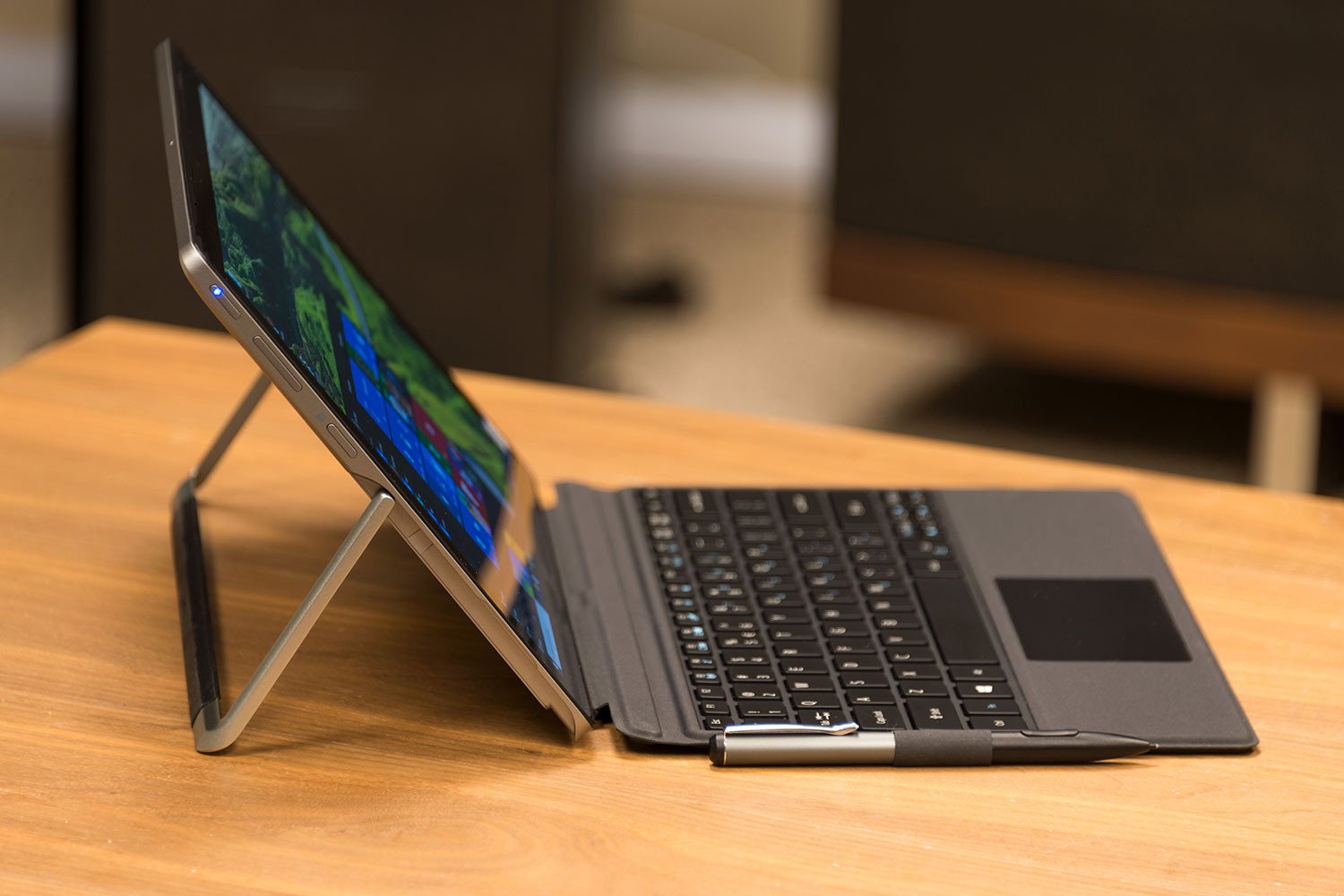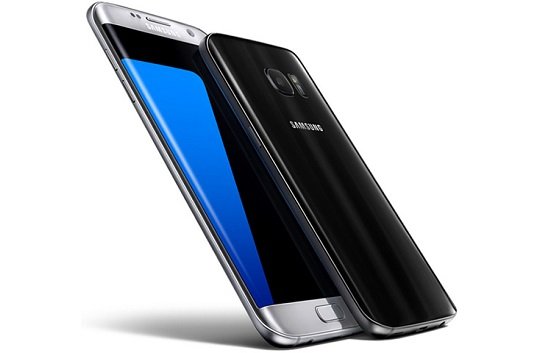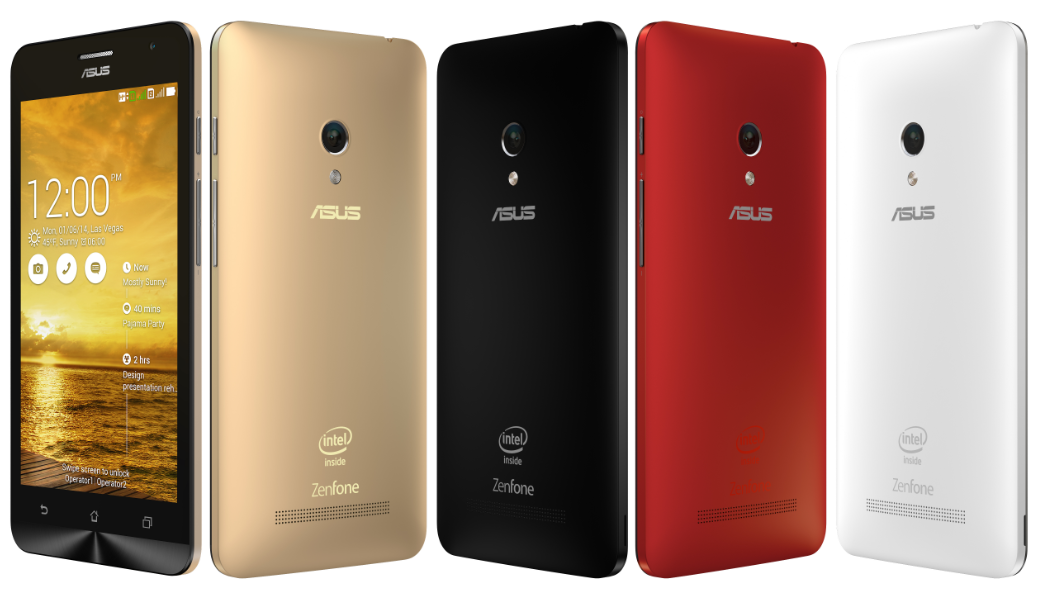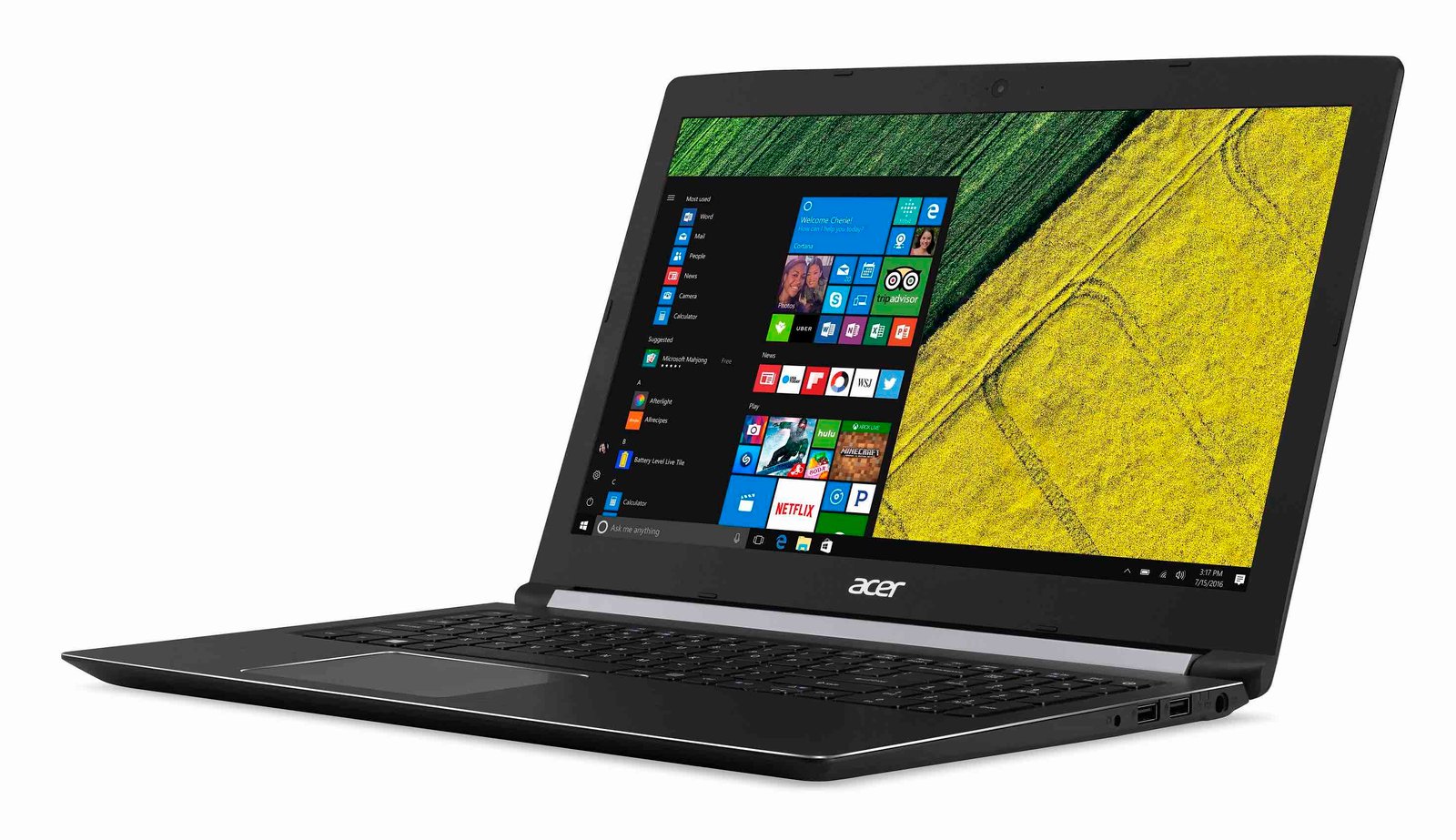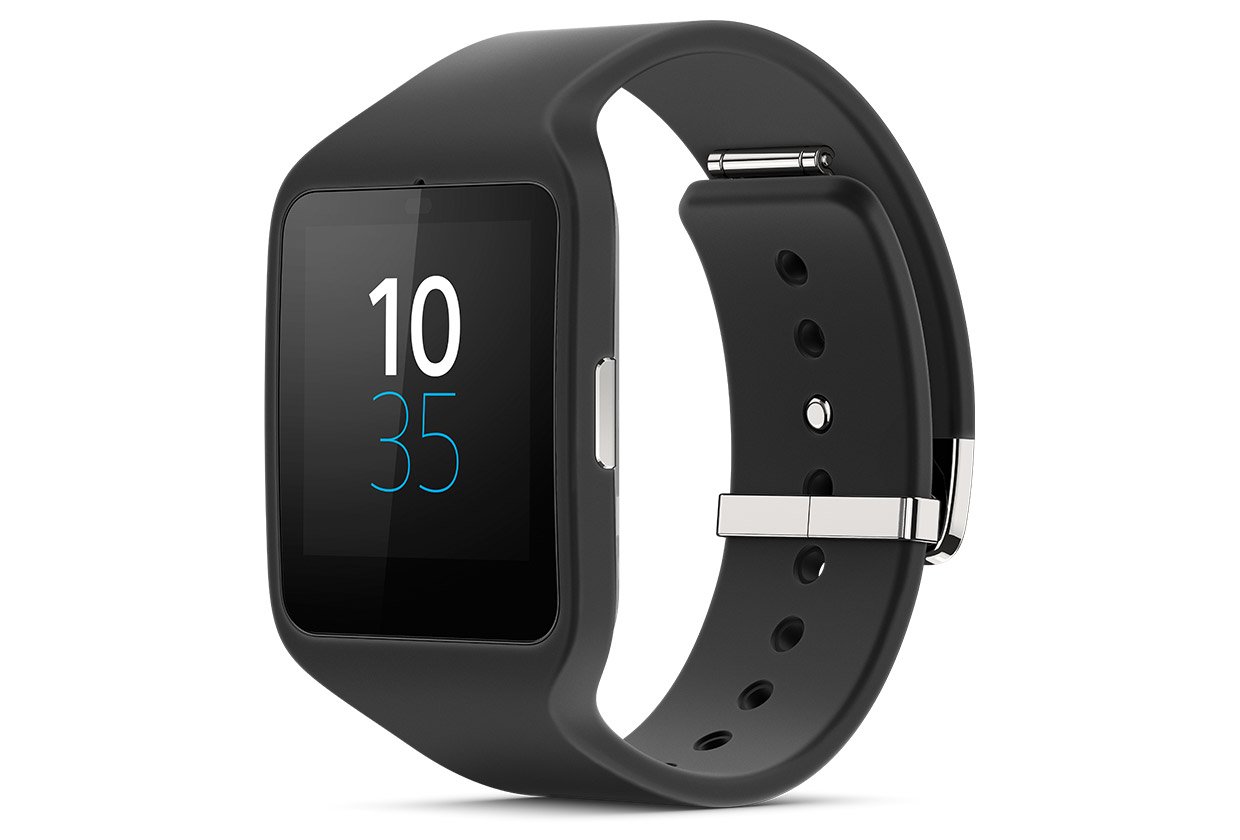Acer’s newest product into the 2-in-1 market is its new Switch Alpha 12. This tablet-first 2-in-1 comes in a bunch of configurations all packing 6th generation Intel Core processors. What’s special about the Switch Alpha 12 is that it is passively cooled, meaning it operates totally silent. Acer says it’s the first tablet with this class of processor to not use active cooling.
Our Switch Alpha 12 review unit came with a Core i3-6100U processor and Windows 10 Home pre-installed. The Switch Alpha 12 is available at a price tag starting at AED 2,999. From a distance, the Switch Alpha 12 looks like most other 12-inch Surface-alike Windows tablets released over the past several years.
That’s not a knock, as it’s hard to imagine a tablet like this looking all that different from another. Up close, the Acer tablet has an excellent, brushed-aluminum backing in silver. The Switch Alpha 12’s tablet-only portion feels solid in the hand. Overall, its 11.5-by-7.93-by-0.62 inches, 1.2-kg footprint is quite good to carry around, when you are on road.
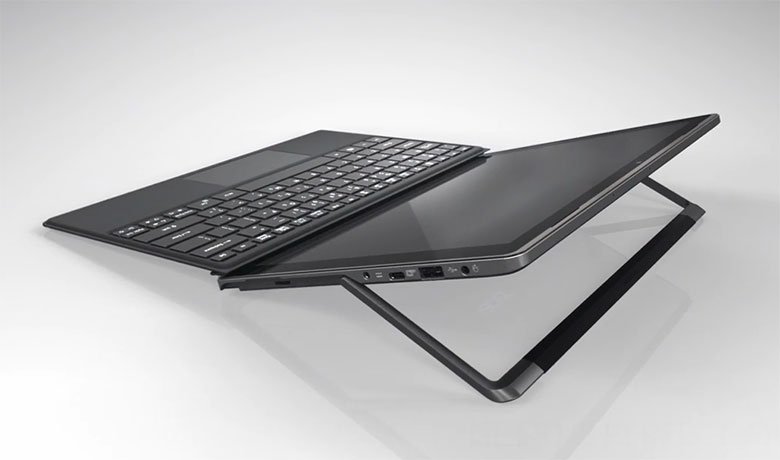
Acer’s detachable keyboard adds a quarter-inch to the Switch Alpha 12’s thickness. The Switch Alpha 12’s rectangular exterior houses a display that offers a 2160-by-1440 resolution. Its extra-stiff hinge has a 165-degree adjustment range. The rubber sleeve around the base of the Switch Alpha 12’s kickstand allows for a secure footing.
Even pressing hard on the tablet’s screen isn’t enough to dislodge it. The non-slip surface of the keyboard base provides additional stability, preventing the tablet from sliding around. The Acer’s display makes use of IPS technology for 160 degree viewing angles. The display has outstanding brightness, to the point where it’s visible outdoors in direct sunlight.
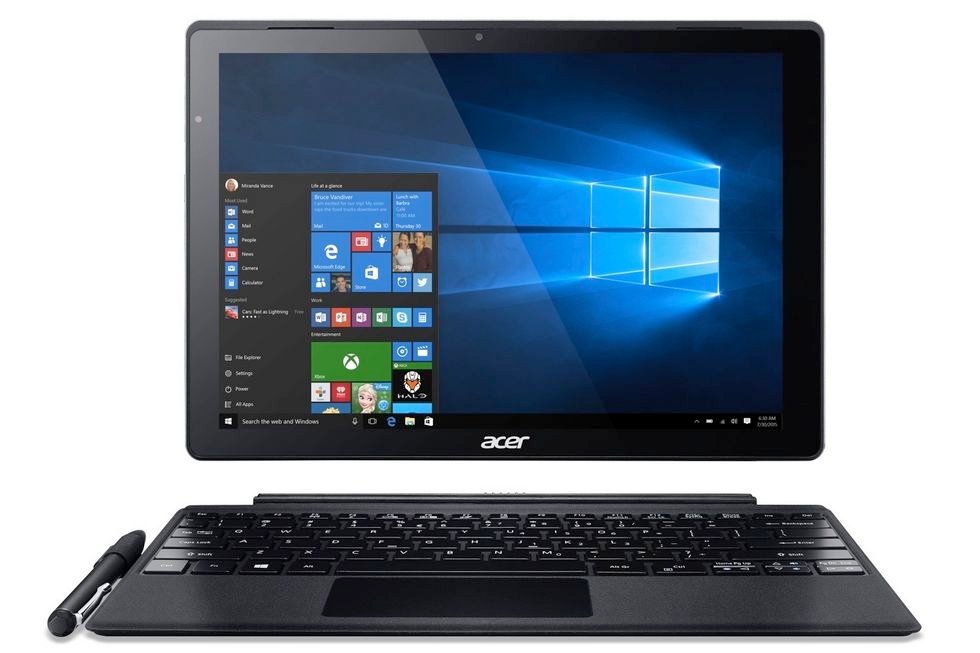
The picture quality is vivid, with lively but not oversaturated colours. This 2-in-1 would be quite usable for photo editing, after the display is calibrated, of course. Indeed, the idea of using this tablet as a mobile photo-editing platform is quite attractive, given its powerful Core i-series ultramobile processor, as opposed to the weaker Core M processors in most of today’s competing 2-in-1s.
We also noted a respectable selection of ports and physical buttons for a 2-in-1 of this kind. Its left edge holds a physical Windows button (which not all Windows tablets include anymore), plus the volume rocker and power buttons. The buttons are sufficiently recessed, and require enough pressure to prevent accidental engagement.
The tablet’s right side has a MicroSDXC card slot (hidden by the folded kickstand), an AC power jack, a USB Type-C 3.1 port (a straight-up USB port, it doesn’t support Thunderbolt 3), a full-size USB 3.0 port, and a combined headphone/microphone jack. We like how the MicroSDXC slot is easily accessible, as opposed to being behind a pinhole cover.
We furthermore liked that the AC power connector has a right-angle elbow bend, so the cord snakes down the right side of the tablet, as opposed to jutting out straight. A headphone cable will dangle awkwardly from the upper right corner, though.
The Switch Alpha 12 doesn’t have a dedicated video-out, but because it includes both USB Type-C 3.1 and a proprietary power jack, we’re mostly willing to forgive this omission. You’ll still need to pick up a USB Type-C-to-HDMI (or VGA or DisplayPort) adapter to make use of USB Type-C video-out, in most situations. But the fact remains that you can simultaneously power this tablet and use video-out, which is a good thing.
The top of the tablet has a hole for the microphone, and only the pogo-style connector for the detachable keyboard is on the bottom. Switch Alpha 12 variations start with 4GB of RAM and a 128GB SSD, but they go all the way up to 8GB of RAM and a 512GB SSD. Our review sample packed 8GB of RAM and a 128GB SSD.
The Switch Alpha 12’s speakers are located behind the horizontal slits above the display. These offered good sound quality. The Alpha 12’s front-mounted camera is 1080p, not 720p as is the norm. The quality is good for casual video conferencing. The rear-mounted camera is 5-megapixels (2,592×1,944 pixels). It’s located at the tablet’s upper right corner. It takes good pictures under good lighting conditions.
The detachable keyboard we received for testing is a detachable keyboard for Acer’s hybrid with a keyboard and touch pad. It does not come with extra ports or batteries built in. It snaps onto the bottom of the tablet magnetically. The magnetic hold was strong enough that we were able to pick up the whole works by just the keyboard base, with the tablet dangling in mid-air.
To detach the keyboard, just hold it down, then gently tug the tablet portion free. No special skill is required to reverse the process; simply put the tablet within an inch or so of the keyboard base, and the magnets take care of the rest. The black material on the top and base of the keyboard has a soft, almost fabric-like feel, although it’s plastic.
Its anti-slip nature, in conjunction with the rubberised base of the tablet’s supporting kickstand, prevents the Alpha 12 from sliding around on almost any surface. It also gives your hands a good grip when toting the tablet around. The Chiclet-style keys have a friendly feel. There’s an ample 1.4mm of key travel, which gives your fingers a chance to feel the up-and-down motion.
The Alpha 12’s keyboard is backlit in white, with one brightness level (plus off). The keyboard hinge has two positions. The horizontal bump just forward of the keyboard deck can be folded up and attaches magnetically to the display. This raises the keyboard off the desk at about a 10-degree angle. The narrow touch pad is offset to the left, exactly in line with the spacebar.
The Acer Switch Alpha 12 is one of the few detachable Windows tablets powered by a notebook-class Intel “U” Core i-series processor. Most competing 2-in-1s use the lower-tier Core M processor. This makes the Acer tablet a true replacement for a notebook, at least from a performance perspective. The challenge with the Core “U” i-series is that the chips in it have a 15-watt thermal footprint, as opposed to just 4.5 watts for the Core M. Thus, it’s considerably more challenging to keep cool when packed in a tight space.
Picking up with the thermals, the challenge with using a Core “U” i-series processor in a tablet, as opposed to a Core M, is keeping it cool. To keep things passive, Acer uses what it calls “LiquidLoop,” an internal liquid-cooling system. The concept is broadly similar to liquid cooling on a desktop, where liquid is circulated through the processor’s heatsink. According to Acer, the liquid circulates via vapour action of the liquid inside the system, not a dedicated pump. Evaporation and cooling do the work.
It seems to work, too. The exterior of the tablet ran at more or less room temperature under most general usage. We noticed the back right side got warm in the course of running our intensive benchmark tests, but the heat was barely noticeable in most other situations. Streaming a 1080p video, for example, made the tablet only lukewarm.
The Alpha 12 has a few unique advantages, when compared with other similar devices on the market. This 2-in-1 is fanless, and that’s even more notable in light of the notebook-class Intel Core “U” i-series processors inside. With its well-rounded feature set and no-brainer price coupled together, the Switch Alpha 12 is a slam-dunk for Acer. The Windows 10 2-in-1 marketplace is crowded, but Acer has managed to produce a star that shines brighter than the rest.
Price: AED 2,999


